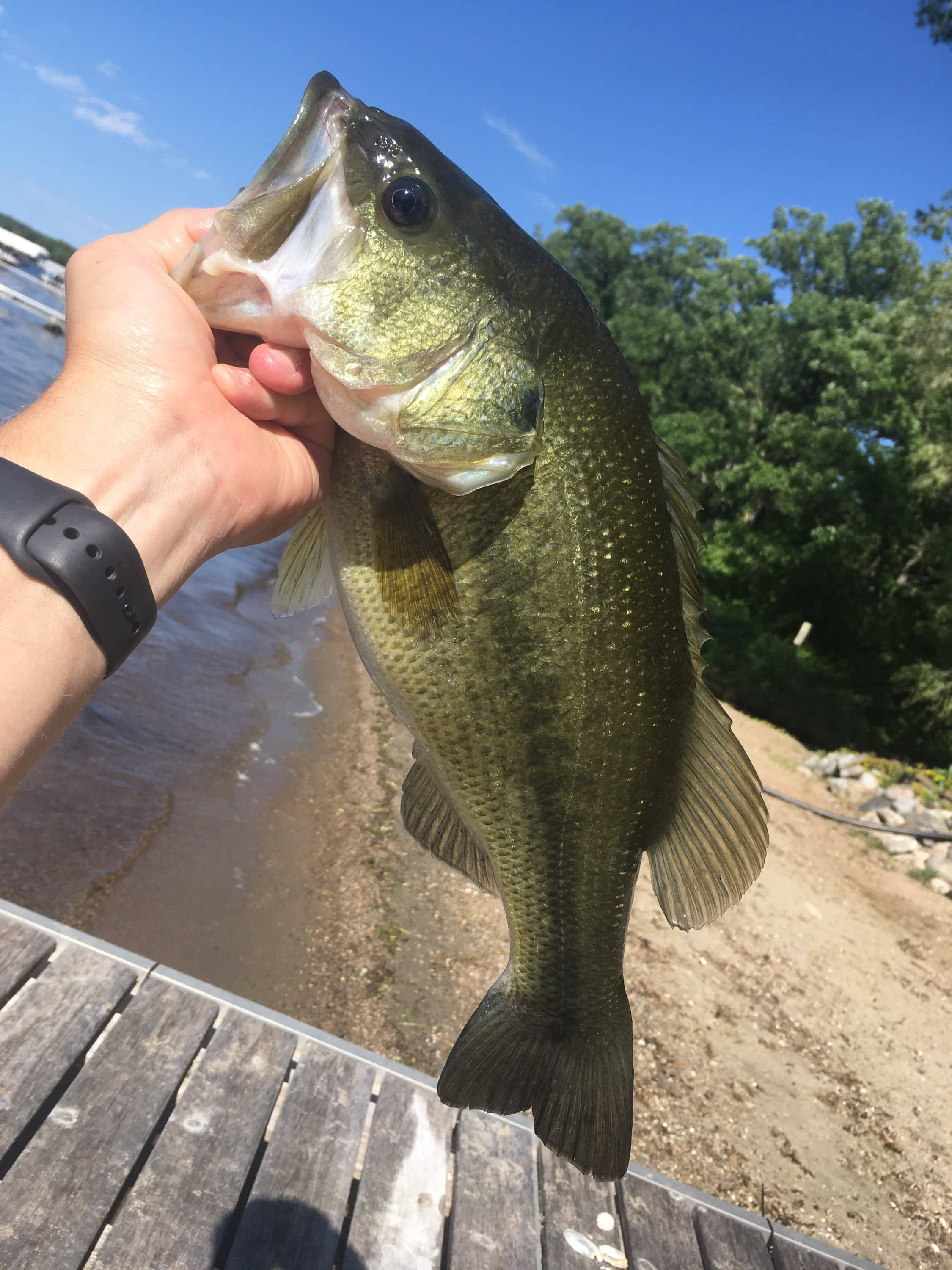
Knock Knock. A walk along the sandy shore of Detroit Lakes brought back good memories and quality largemouth on a pre-summer evening. Simonson Photo.
By Nick Simonson
Long before I owned a boat, I spent much of my summers in high school, college and law school at my grandparents’ cabin on the shores of Detroit Lakes.
Between Memorial Day and Labor Day in those later years, as graduations loomed and then passed, and the liberty of post-secondary education waned and reality could only be prolonged by a final summer at the lake ahead of the bar exam, I spent many evenings wandering the shoreline to the east and west of the old green cabin, spinning rod in hand and a stash of hooks and bass plastics in my pocket. In addition to relearning everything I had supposedly absorbed in three years of law school in a six-week summer crash course, I learned a good portion of what I know about fishing docks for largemouth bass in that final summer of freedom.
However, it was all learned in reverse. From the sandy shore in a pair of board shorts, wading up to my knees and skipping tubes, worms and creature baits out toward the posts, pontoons and pumps for each cabin’s watering system, I probed the structures for the black-striped largemouth, which in that final summer of my youth, were the biggest I had ever encountered on the lake.
In subsequent years, from my boat in the spare time I could manufacture, I’d simply cast in toward the same spots to find success. But for an hour each evening, or perhaps a quick sprint in the afternoon when a well earned break from my studies was required to maintain my sanity that season, I’d skitter a Texas-rigged plastic across the surface and thread the needle between boat lifts and dock posts and under the hull of pontoons raised out from the water, hoping to hit that sweet spot deep in the shade that provided cover from the summer sun for the lake’s largemouths.
With the hopes that my superline would snake the fish out from under those structures, I became quite competent at finding those target areas deep in the larger docks that hosted multiple crafts, and the best were those complexes that held pontoons, fishing boats and jet skis, and had more than one arm of walkway bending above. Sometimes the cagey bass would wrap the line around one or two of the posts, and I’d work to yo-yo them back, giving some line before horsing them around the structure. Sometimes the line would break, and sometimes I’d succeed, but as the summer progressed, I began to formulate a pattern based on dock type, as to the number and size of fish that frequented each one and what it would take to get them out. It wasn’t long before I could predict where they’d be, whether a cast would fall short of the spot or be a sure thing and even calculate a countdown before I could expect a slight bend in my rod before I engaged in a baseball-swing hookset to pull the fish toward my spot near shore.
Tonight, after a two-hour session of jumping from the dock with my boys and splashing in the warming pre-summer waters, I picked up my rod and tied on a 4/0 worm hook and threaded a root beer colored Senko on it, just to see if the bass had moved up to their post-spawn haunts that lingered in my memory. I had a half hour before I was due to fire up the grill and get a dinner of hamburgers and hotdogs going, so I took a walk down the sandy substrate of memory lane. While many of the docks, and most notably, their cabins had changed, a few remained the same, including the first one, where I often talked with the owner as I fished his bass, and he cleaned his morning catch of walleyes. There, under the big U that surrounded the pontoon, I zipped the brown plastic worm and counted to five before snapping the reel shut.
With a crank of the handle, I saw the telltale bend in the tip of the rod and hauled back against the cinderblock weight on the end, and I was instantly transported back 15 years in time as the wide white mouth broke the surface just inside of the dock and I horsed the green bodied fish from the weeds as it tumbled across the surface, sending the plastic sliding up the line. With some help from my enthralled lab, I steered the fish toward shore and tweaked the wide-gap hook loose from its mouth, before holding it up for a quick picture and a release.
It was a good feeling to know that the fish were there, and likely would be down the shore, if not now then as summer gets underway and the shallows warm up.
Whether for me or another angler pitching from a sandy spot, or from a spot on the bow of a boat on the outside edge of the shallows, the bass had endured and the walk along shore would remain a productive one for anyone willing to take a shot at those deep shady areas, threading the needle and placing their plastics right where they needed to be for a solid tug on the line and a summer – or just a quick break – loaded with fun.
